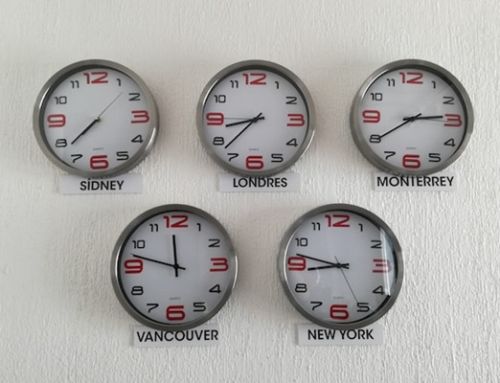In today’s rapidly changing business landscape, companies must adopt new strategies to stay ahead of the competition. One such approach is building a flexible and agile workforce, and MarketGap has taken this to heart with its innovative method of hiring freelancers. By embracing the gig economy, They are capitalizing on the profound advantages of freelance talent, including cost efficiency, access to a wide range of expertise, and the ability to scale teams up or down depending on project requirements.
The growing importance of digital transformation has also fueled the need for flexible workforces. FBA tools startup MarketGap‘s approach to hiring freelancers allows the company to tap into a wide pool of diverse skills and expertise, crucial for adapting to the increasing demands of technological advancement. This collaborative strategy between full-time employees and freelance talent fosters a more productive and efficient working environment while ensuring the company keeps up with the demands of the modern business world.
Key Takeaways
- MarketGap leverages freelancers to create a flexible and agile workforce, catering to the dynamic nature of the business world
- Freelancers allow MarketGap to access diverse skillsets, facilitating digital transformation and fostering innovation
- Collaboration between full-time employees and freelancers boosts productivity and efficiency within the company
Image by rawpixel.com on Freepik
Sourcing Freelance Talent
Trends During Covid
The Covid-19 pandemic accelerated the adoption of remote work and the gig economy, inspiring companies to adapt their hiring practices. As a result, businesses have become more willing to explore freelance talent to build a flexible and agile workforce. This shift offers companies more scalability and grants access to a diverse pool of skills and expertise.
Choosing Platforms
When it comes to sourcing freelance talent, there are numerous online platforms like Upwork that can help companies like MarketGap find the right talent for specific projects. Some key factors to consider when choosing a platform include:
- Ease of Use: A straightforward interface that simplifies the process of posting jobs, communicating with freelancers, and managing contracts.
- Talent Pools: Access to diverse pools of freelancers with varying skills, experience levels, and geographic locations.
- Costs and Fees: Transparency and fairness in pricing for both the hiring company and the freelancers.
Exploring and understanding a platform’s features and offerings can ensure a successful partnership for both parties.
Social Media Network
Social media networks like Twitter have emerged as alternative ways to source freelance talent. By refining their social media strategies, companies like MarketGap can tap into larger talent pools and even create a network of potential candidates, thus helping them hire more efficiently. Here are some ways to leverage social media for freelance hiring:
- Sharing Opportunities: Regularly post job listings and project opportunities on social media channels with appropriate hashtags to reach a wider audience.
- Engaging With Talent: Connect with potential freelancers by following them, sharing their work, and engaging in conversations.
- Showcasing Company Culture: Promote your company’s values, projects, and successes to attract like-minded professionals looking for freelance opportunities.
By utilizing creative hiring practices and making the most of available resources, companies can source quality freelance talent and remain agile in the face of uncertainty.
Onboarding and Collaboration
Tools for Effective Communication
In the era of remote work and a growing gig workforce, MarketGap’s approach to onboarding freelancers focuses on fostering effective communication. They utilize a variety of collaboration tools to ensure seamless integration of freelancers with the rest of the team. Some examples of these tools include:
- Instant messaging platforms like Slack or Microsoft Teams to facilitate quick conversations
- Project management software such as Trello or Asana to help freelancers stay organized and understand their tasks and deadlines
- Video conferencing services like Zoom or Google Meet for face-to-face meetings and brainstorming sessions
These tools play a critical role in helping new freelancers feel included and informed while working on MarketGap projects remotely.
Investing in Online Training
Proper training is essential for onboarding freelancers and ensuring they have the necessary skills and knowledge to succeed in their roles. MarketGap’s innovative approach involves investing in online training courses and resources to provide an engaging learning experience for newly hired freelancers.
They make use of a range of digital learning platforms, such as LinkedIn Learning or Coursera, to curate a collection of relevant courses tailored to suit the needs of freelancers in various roles. This customized training helps freelancers understand MarketGap’s processes, values, and expectations more effectively.
Additionally, MarketGap encourages freelancers to participate in regular virtual workshops facilitated by company experts. These interactive sessions provide an opportunity for freelancers to learn directly from experienced team members, ask questions, and share insights.
By incorporating creative communication tools and investing in online training, MarketGap is paving the way for a flexible and agile workforce that embraces the gig economy while maintaining strong collaboration and efficiency in their projects.
Freelancers and Workforce Diversity
MarketGap’s innovative approach to hiring freelancers focus on building a flexible and agile workforce to address the constantly changing business landscape. This new strategy promotes diversity by tapping into alternative talent sources and bringing unique perspectives, experiences, and skill sets.
Expanding Networks
One significant advantage of hiring freelancers is the ability to expand an organization’s network, allowing them to access a broader range of expertise and cultural backgrounds. This can, in turn, improve decision-making and problem-solving capabilities. According to a report by Forbes, diverse teams are more successful in solving complex problems and engaging with a broader customer base.
To increase diversity and inclusion, human resources departments could explore creative new ways of finding and engaging with freelancers. Some approaches to consider include:
- Participating in industry-specific online forums and social networks where diverse groups of freelancers discuss their work and seek new opportunities.
- Partnering with organizations and agencies that focus on promoting minority talents, such as minority professional associations and diversity-focused recruitment firms.
- Utilizing advanced technologies, such as artificial intelligence, machine learning, and assessment tools, to identify and recommend freelancers with varied expertise within an organization’s existing network.
In conclusion, MarketGap’s new approach to building a flexible and agile workforce through freelancers emphasizes diversity and inclusion. This strategic shift promises increased access to diverse expertise, a broader understanding of different markets, and more robust decision-making capabilities. By incorporating innovative techniques for engaging with freelancers, human resources departments can help organizations stay ahead in the increasingly competitive business landscape.
Adapting to the Future of Work
In today’s fast-paced and ever-changing business landscape, companies must embrace new ways to build a flexible and agile workforce. One such innovative approach is hiring freelancers, as demonstrated by MarketGap’s recent successful transformation.
Case Study: Rapid Transformation
When MarketGap realized the need for digital transformation and a more dynamic online presence, they turned to freelancers for their expertise in innovation and experimentation. Hiring freelancers allowed MarketGap to tap into diverse talent pools and quickly assemble teams with unique skill sets. This proved particularly beneficial given the increased emphasis on online presence and talent management in today’s business environment.
Employing freelancers enabled MarketGap to swiftly adapt to emerging trends and technologies, fostering a culture of digital transformation and innovation. Leveraging its extensive network of freelance professionals, It could initiate new projects, test different approaches, and seize opportunities with minimal delay.
For their Human Resources department, this new workforce structure proved to be a groundbreaking shift in managing talent. Creative solutions like using project-based contracts and implementing virtual onboarding processes streamlined operations and enhanced collaboration between freelancers and in-house teams.
| Benefits of Hiring Freelancers | Impact on MarketGap |
| Access to diverse talent pools | Improved skill variety |
| Faster response to trends & technology | Agile digital transformation |
| Efficient talent management | Effective collaboration |
In conclusion, MarketGap’s decision to integrate freelancers into their workforce strategy reflects the changing landscape of flexible work and their commitment to adapting for success in the digital age.
Conclusion
Innovative companies like MarketGap are redefining the boundaries of the traditional workforce by embracing freelancers to create a more flexible and agile ecosystem. By incorporating remote work and non-traditional employee structures, these organizations are adapting to the evolving needs of their clients and the global market at large.
Freelancers play a crucial role in this transformation, as they offer various benefits to the companies they collaborate with. By engaging freelancers, these businesses can access a diverse pool of talent, build resilience against market fluctuations, and respond swiftly to changes in consumer demands. This approach can ultimately result in a more efficient and cost-effective way of operating.
To fully harness the potential of freelancers, human resources departments must adopt creative and innovative strategies. These can include rethinking the onboarding process to cater to non-traditional employees, building a remote-friendly company culture, and using data-driven insights to identify skills gaps and align them with the ever-changing demands of the market.
By investing in flexibility and agility, businesses like MarketGap can stay competitive and ensure that their bottom line remains strong, even in the face of disruption. To do this, organizations must be open to change, willing to take risks, and persistent in challenging conventional norms of work.






Leave A Comment